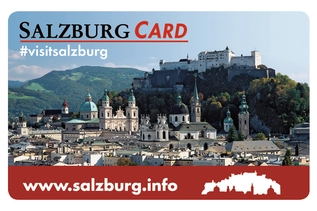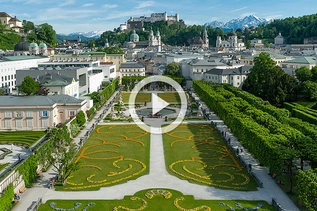
The Old Town Hall
Standing in a prominent location in the heart of the historic district, the Old Town Hall is able to recount stories that span several centuries. With its tower clock, the "Hall of Pillars" and the famous Kulstrunk Panorama, the townhall is a small treasure trove in its own right.
The Old Town Hall catches the eye of visitors with its Rococo façade from 1772 and its iconic tower. With the mayor moving across to Schloss Mirabell in 1947, the Old Town Hall now houses a gallery as well as the meeting rooms of the city council, as it does the oldest clock and the oldest bell in the city. The figure of Justitia (1616) ensconced in the outer wall hints at this town hall's former role as a courthouse.
The Old Town Hall on Rathausplatz was built in the 14th century and purchased by the city in 1407. Salzburg has had a city council since about 1370, acquiring a mayor just a little later. The so-called "Kheuzlturm" fulfilled many functions: the bells marked the nighttime curfew, the tower clock and the tower trumpeters served as timekeepers for the public, while the call of the night watchman could also be heard echoing from the city tower. It was also from here that the alarm was sounded in the event of fire or public disturbance. Beginning with the reign of prince-archbishops Matthäus Lang and Wolf Dietrich von Raitenau, however, the mayor and the townhall gradually lost significance. Over the centuries, the function of this building changed, even dance events being held here until the Landestheater was built. It was also here that the city clerk, the city midwife and the city preacher had their official lodgings.
To this day, the Old Town Hall boasts a number of interesting features: on the first floor, for example, the Hall of Pillars attracts visitors to the City Gallery with alternating exhibitions by Salzburg artists. Located on the second and third floors are the meeting rooms of the city council as well as other municipal offices. The Bürgergarde [civil guard] keep their collection of traditional weapons and uniforms on the fourth floor. One particular highlight is the Kulstrunk Panorama "The Town of Salzburg in 1916", which is exhibited on the second floor and is accessible to the general public.
























